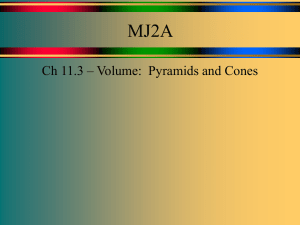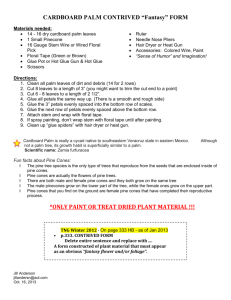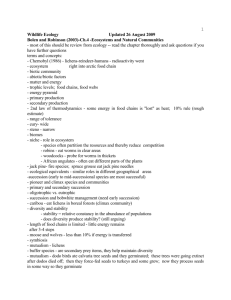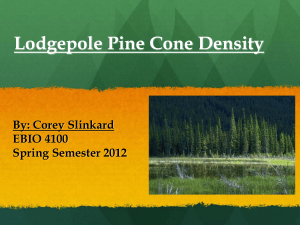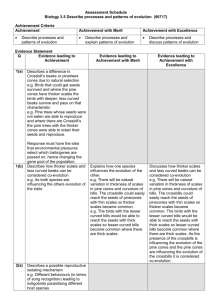Standard Biology Lab Format
advertisement
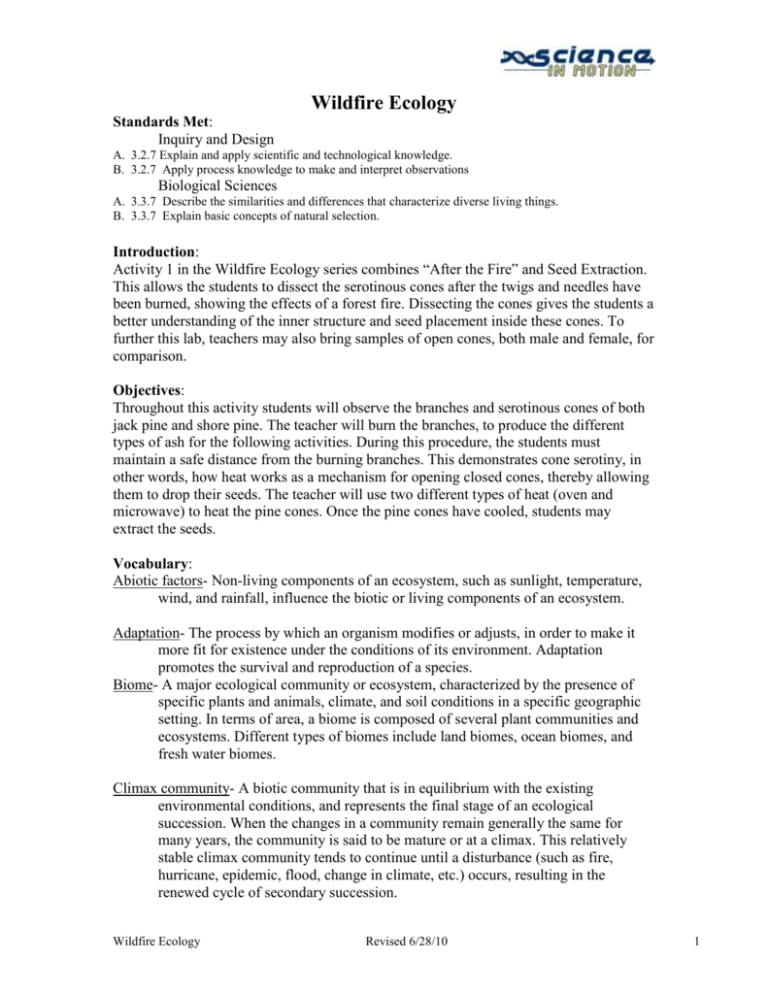
Wildfire Ecology Standards Met: Inquiry and Design A. 3.2.7 Explain and apply scientific and technological knowledge. B. 3.2.7 Apply process knowledge to make and interpret observations Biological Sciences A. 3.3.7 Describe the similarities and differences that characterize diverse living things. B. 3.3.7 Explain basic concepts of natural selection. Introduction: Activity 1 in the Wildfire Ecology series combines “After the Fire” and Seed Extraction. This allows the students to dissect the serotinous cones after the twigs and needles have been burned, showing the effects of a forest fire. Dissecting the cones gives the students a better understanding of the inner structure and seed placement inside these cones. To further this lab, teachers may also bring samples of open cones, both male and female, for comparison. Objectives: Throughout this activity students will observe the branches and serotinous cones of both jack pine and shore pine. The teacher will burn the branches, to produce the different types of ash for the following activities. During this procedure, the students must maintain a safe distance from the burning branches. This demonstrates cone serotiny, in other words, how heat works as a mechanism for opening closed cones, thereby allowing them to drop their seeds. The teacher will use two different types of heat (oven and microwave) to heat the pine cones. Once the pine cones have cooled, students may extract the seeds. Vocabulary: Abiotic factors- Non-living components of an ecosystem, such as sunlight, temperature, wind, and rainfall, influence the biotic or living components of an ecosystem. Adaptation- The process by which an organism modifies or adjusts, in order to make it more fit for existence under the conditions of its environment. Adaptation promotes the survival and reproduction of a species. Biome- A major ecological community or ecosystem, characterized by the presence of specific plants and animals, climate, and soil conditions in a specific geographic setting. In terms of area, a biome is composed of several plant communities and ecosystems. Different types of biomes include land biomes, ocean biomes, and fresh water biomes. Climax community- A biotic community that is in equilibrium with the existing environmental conditions, and represents the final stage of an ecological succession. When the changes in a community remain generally the same for many years, the community is said to be mature or at a climax. This relatively stable climax community tends to continue until a disturbance (such as fire, hurricane, epidemic, flood, change in climate, etc.) occurs, resulting in the renewed cycle of secondary succession. Wildfire Ecology Revised 6/28/10 1 Science in Motion Juniata College Crown fire- A fire that burns in the crowns of trees and shrubs. Crown fires are usually intense and usually ignited by a surface fire. Crown fires are common in coniferous forests and chaparral-typed shrublands. Pioneer species- The first species to become established during primary succession. In the primary succession of what might eventually become a forest habitat, the pioneer species is usually lichens. In the primary succession of a body of water, the pioneer species is usually single-celled algae (phytoplankton). Seed bank- The population of viable dormant seeds that accumulates in and on soil, and in sediments under water. Serotiny- The retention by a plant (usually by trees) of seeds in hard enclosing structures, such as cones, so that the seeds are not dispersed and free to germinate until after some environmental condition, to which the plant has adapted, occurs. Succession (primary and secondary)- The process by which ecological communities are built and rebuilt. * Primary succession occurs when organisms become established on land that is completely devoid of soil and vegetation. Primary succession always involves the formation of soil. * Secondary succession occurs when an existing ecological community, where soil is already in place, is disturbed by some condition, such as fire, hurricane, cultivation, change in climate, etc. Because the soil is already in place, secondary succession can take place five to ten times faster than primary succession. Surface fire- Fire the burns in litter and other live and dead fuels at or near the surface of the ground, mostly by flaming combustion. Questions: 1. What causes forest fires (both natural and human related)? 2. Are forest fires only destructive? 3. Where do most forest fires occur in the United States? State various reasons for this. Wildfire Ecology Revised 6/28/10 2 Science in Motion Juniata College 4. What protects the seeds before the fires begin? 5. What is the difference between serotinous cones and open cones? Explain why they have adapted different forms of reproduction. 6. Why are fires helpful to serotinous plants? 7. How many seeds would you expect to find in each cone? 8. What are the major, generalized land biomes found on the Earth, and where do these fires exist? 9. Where are the cones located on a pine tree? Why is this important in a serotinous environment? 10. How will the cones heated by the microwave differ from those heated in the oven? Wildfire Ecology Revised 6/28/10 3 Science in Motion Juniata College Materials: Oven Microwave Gardening gloves Forceps Jiffy pots Aluminum foil Plastic wrap Peat moss Sand 16 oz. spray bottle Fungicide Disposable gloves Plastic trays Plastic bags/ Petri dishes Shore pine cones and needles Jack pine cones and needles Safety notes: Take caution when baking the pine cones. They will catch on fire! I suggest watching until you see the cones open up and then remove them. Do not leave the cones in for the entire bake time if it is not necessary. Procedure: 1. Observe the closed cones before they are heated. 2. Observe as the teacher uses the various methods (oven and microwave) to heat the cones. 3. Observe and describe (possibly draw) any visible changes that occurred as a result of heating the pine cones. Is there any visible difference between the pine cones that were heated in the oven and the pine cones that were heated in the microwave? 4. Take turns extracting the seeds from the cooled pine cones. To extract the seeds: While wearing hand protection, such as garden gloves, pinch and twist each of the open scales on the cone. After all the scales have been twisted, tap the cone on the table until the seeds pop out. 5. Place the seeds from each cone in the appropriate bag. 6. Once the seeds are extracted, examine each type under low power magnification (dissecting scopes or hand lens). Describe the structure of the seed of each pine. Some of the seeds will have wings. Describe the function of the wing. Draw the different types of seeds. What color is each seed? Wildfire Ecology Revised 6/28/10 4 Science in Motion Juniata College Data: Analysis and Conclusions: References: (2007, June 27.) Wild Fire Ecology Activity, TDCT. Tonawanda, NY: Science Kit. Retrieved June 2, 2007. www.sciencekit.com/wild-fire-ecology-activitytdct/p/ig00198841. Wildfire Ecology Revised 6/28/10 5


